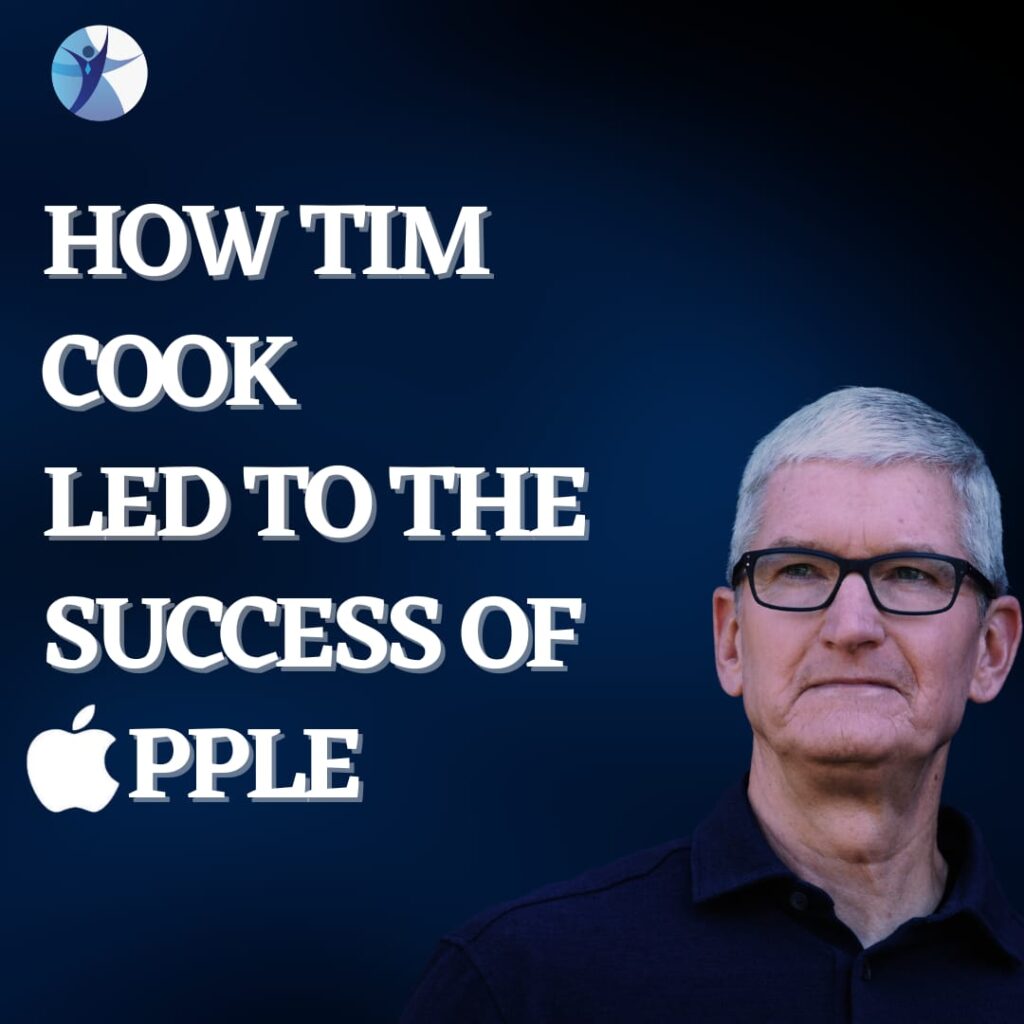Sceptics questioned if Apple could sustain its legendary reputation when Tim Cook entered the helm. They had no idea that Cook had a strategy in place that would propel the company to even greater heights. Tim Cook’s leadership is one of the greatest success stories of this century so far in terms of business success.
In August 2011, there was a lot of instability on Wall Street and the day Steve Jobs stepped down from day-to-day management, Apple’s shares fell to about 5%. Two months later Steve Jobs passed away, shocking the business and raising many concerns about its future. People associated Apple with Steve Jobs and believed that he was the Picasso of the tech industry.
Cook stepped in and calmed Wall Street’s concerns about Apple without Steve Jobs at the helm. Following the passing of Steve Jobs, Cook’s capable leadership took on even greater significance. As early as 2003, Steve Jobs began mentoring Cook to succeed him as Apple’s CEO.
Tim Cook’s skillful management allowed Apple to grow from a market worth $153.3 billion at the time of Jobs’ passing to a staggering $2.91 trillion in 2023.
Tim Cook started his career in 1982 with IBM, where he spent 12 years in a variety of positions, including supply chain management and manufacturing. He joined Compaq in 1994 as the Chief Operating Officer, serving as the organization’s supply chain manager. According to Tim Cook, the history of Apple looked very bleak at the point when he was going to join the company. Cook nonetheless consented to join Apple after being convinced by Jobs several times. He joined Apple as the Senior Vice President for Worldwide Operations in 1997. Tides turned when Tim came on board as the vice president less than a year after his debut in the company.
He was instrumental in the creation and execution of Apple’s plan to outsource production to Asia. The corporation was reporting profits and this was seen as an extraordinary shift from a recent report that showcased a net loss of over $1 billion from the previous fiscal year.
Every decision Cook made came with the inevitable question, “What would Jobs do”? and though the leadership styles of both are very different, Tim Cook proved to be the CEO that would take Apple to new heights. The unique leadership qualities of Cook which make him one of the most successful leaders of the decade are:
Emphasis on Supply Chain Management: Cook’s proficiency in supply chain management is one of his defining advantages. He envisioned a worldwide supply network for the company that would transform the industry. He aimed to develop a system that was more effective, affordable, and long-lasting. He implemented his famous “just-in-time” inventory system that allowed Apple to order components only when they were needed, reducing the amount of time and money spent on storing and shipping parts.
Commitment to Privacy and Security: Apple has adopted a stern position on the security and privacy of customer data. Tim Cook famously refused to unlock an iPhone that belonged to a mass shooter in 2015, arguing that Apple’s consumers trust the company to protect their data and that if Apple were made to comply, privacy laws would be rendered obsolete. He took a stance against the US government and was prepared to lose the company to protect the consumers’ faith in Apple.
Management Style: Another major contribution comes in terms of Apple’s change in management style over the last 10 years. Apple has now reorganized its teams around specialized project managers, whose responsibility it is to oversee the project from start to finish. Silos do not exist. This is significant. Cook and the top management provide the funding, people, and resources necessary for the product leaders’ initiative to succeed. Although these project managers do report to executive leaders, they have the independence required to guarantee the success of their projects.
Societal Marketing: Tim Cook says “ No company exists out of the world”. He has actively engaged in philanthropic efforts during his tenure. He created initiatives like Apple’s ConnectED, which offers resources and technology to underfunded schools. Cook has also spoken out in favor of issues including immigration reform, LGBTQ+ rights, and human rights. He also stated, “ Don’t tell people how good your product is, tell them how it will change the world”. This idea is demonstrated in each new product launch from Apple.
Asset Light Model: Under Tim Cook, Apple started following the Asset Light Model of manufacturing which was based on Cook’s philosophy of “Don’t do things that the other can do better”. Apple’s asset-light business strategy comprises contract manufacturers like Foxconn for its device production and outsourcing manufacturing. By utilizing the manufacturing knowledge and resources of its partners, Apple can concentrate on design, software, and marketing while maximizing efficiency, scalability, and cost-effectiveness.
In conclusion, Tim Cook’s exceptional leadership has undeniably led Apple to remarkable success in the post-Steve Jobs era. Cook has overcome obstacles and elevated Apple via strategic vision, operational effectiveness, diversity, and a strong dedication to innovation. Apple’s growth has been sustained, and its position as a worldwide technology leader has been cemented, thanks to its emphasis on supply chain management, expansion into new markets, and attention to privacy, sustainability, and social responsibility. Apple has prospered under Cook’s leadership, establishing a long-lasting legacy of success in the ever-changing tech landscape.




